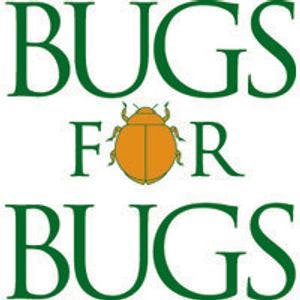Summary
Ladybird adults are small, brightly coloured beetles with a rounded, dome-shaped body. The most commonly recognized ladybird species have red wing cases (elytra) with varying numbers of dark spots. Variations in coloration exist across different species, such as yellow bodies with black spots.
Ladybirds undergo complete metamorphosis, progressing through four distinct stages: egg, larva, pupa, and adult.
The larvae look very different. They are typically dark coloured with a long tapered abdomen (last segment of the body) behind six prominent legs. They lack wings, but are often covered in tiny spines.

A few species of ladybirds are herbivorous, and thus can damage crops rather than protecting them. In Australia the most common such species is the 28 spotted ladybird, easily identified by the number of markings on its back.

Diet
Ladybirds prey on a range of pests, including aphids, leafhoppers, thrips, scale insects, mites, moth eggs and small caterpillars. Both larvae and adults are predators, but adults also eat pollen and nectar.
Pests attacked*
*with pesticide resistance
Monitoring guidelines
Ladybird beetles can be monitored by visually inspecting crops. Adults, eggs, and larvae are frequently found near hot spots of pest infestations, especially aphid colonies.
Two other common methods for monitoring include the use of a sweep net and a beat sheet.
Sweep net: Hold the handle of the sweep net and make sweeping motions through crop. Move the net back and forth in a semi-circular or figure-eight pattern to capture insects present in the vegetation.
Beat sheet: A sheet between 1.3-1.5 m wide by 1.5-2.0 m deep, made of yellow or white tarpaulin with a sturdy stick attached to each end. To use it, place one edge of the sheet at the base of the plants in the row you want to check. Hang the other end over the adjacent row or against the base of the next row for wider spacings. Hold the stick at both ends and shake the plants vigorously 5-10 times to dislodge insects onto the sheet. This process should be repeated at four different non-consecutive lengths of row within a 20-meter radius.
A noticeable increase in ladybird populations, accompanied by a reduction in pest numbers, serves as a key indicator of their impact. However, at present, incorporating ladybirds into economic thresholds is not possible.
Habitat management
Ladybirds are found throughout Australia in a wide range of natural habitats and human-modified environments. Adults are highly mobile.
In much of Australia, ladybirds hibernate during the colder months. Shelterbelts with trees that shed bark or drop leaves (such as eucalypts) promotes their presence by providing habitat for sheltering.
Planting flowering plants in field margins aids adult ladybirds by providing alternative food sources during periods of limited prey.
Chemical toxicity
To assist growers and advisors in making informed choices around insecticide use in Australian grain crops, the below table summarises the toxicity of foliar chemical sprays on Ladybird beetles.
The impact ratings in the table are colour-coded, indicating the level of impact on beneficial insects. The colour scheme is as follows:
- Green: low impact (<30% mortality)
- Yellow: moderate impact (30-79% mortality)
- Orange: high impact (80-99% mortality)
- Red: very high impact (>99% mortality)
Data shown here is directly from the Beneficials Chemical Toxicity Table.
Ratings for toxicity are based on International Organisation for Biological Control (IOBC) protocols for laboratory studies and reflect percent mortality of insects.
These values represent mortality under controlled laboratory conditions – impacts may vary in the field, especially if multiple applications of a chemical occur.





